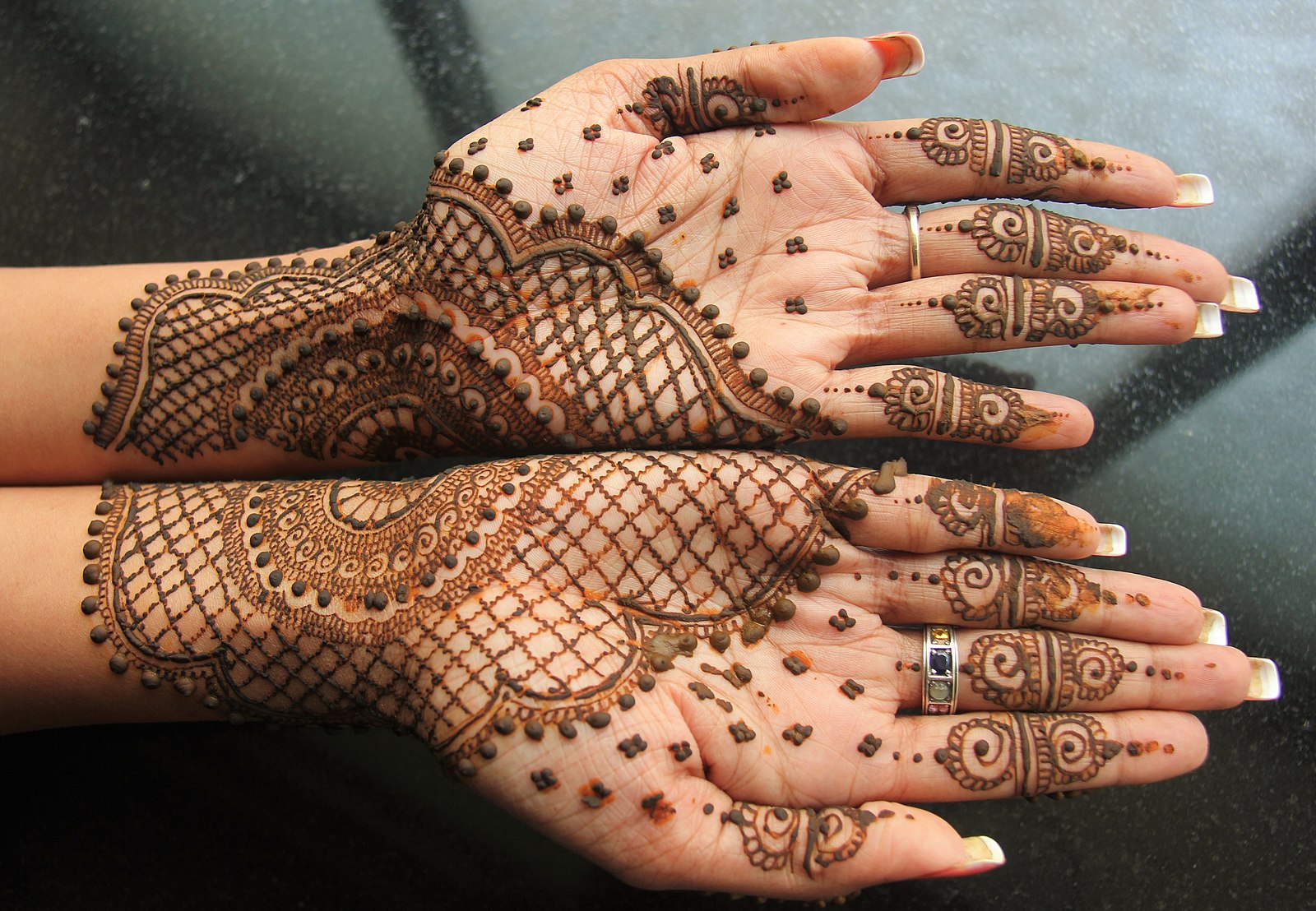The first time I had henna done was on a family trip to Morocco. I remember holding my mother’s hand because I was scared that the cone was a needle. The most important observation I made during this experience was how female-oriented mehndi application is. While everyone, no matter their gender identity, is able to apply henna, women have long been part of the creation of this art.
Being involved in Indian classical dance and attending several weddings made henna an integral part of my cultural experience. My mothers would use Expo markers to mimic the look of henna on my hand before dance performances. During Indian wedding mehndi ceremonies, women attending the celebration came together for a quiet morning of the singing, eating and mehndi application.
While these are all beautiful experiences that I hold really close to my heart, I know that this art form has also been appropriated. For example, numerous people who are not South Asian have appropriated henna designs and the bhindi, including high-profile artists such as Selena Gomez and Katy Perry. ASOS, a large clothing brand, even used traditional female Indian clothing designs without crediting their origin, according to a 2021 Brown Girl Magazine article by Nida Hasan.
Cultural appropriation continues to be a problem and the first way it can be addressed is through education about South Asian culture and art. Often, when people think of South Asian art, they immediately picture old paintings from the Mughal era of India or religious statues. While these are valid, beautiful forms of art, they are not the only form of South Asian art.
A 2017 Pacific Ties article explored the expansiveness of South Asian art within the APIDA community and opportunities for UCLA students to celebrate it on campus. While UCLA South Asian Art Week has not happened since 2017, other events on campus celebrate South Asian artists in different ways. For example, a group of South Asian students leads the Henna club on campus to promote South Asian art forms and cultural traditions. While it might seem like a small act to have a running Henna club led by South Asian student artists, it’s important to be able to demonstrate our culture and heritage to the UCLA community accurately and respectfully.
South Asians are often stereotyped to be “only good at STEM” or only have career options within medicine, engineering, and law. This stereotype undermines the work of many South Asian artists, starting from the women in our families who have practiced henna application for years to professionals trying to increase APIDA representation in their artistic fields. It is vital to honor the work of these artists because, without them, South Asian culture would not be as rich or diverse.
Art is a form of sharing culture, and within the South Asian diaspora, it has taught children of immigrants about their heritage. Without South Asian female artists in my life, I do not think I would have a strong sense of cultural identity or understand the overlap between my culture and others. I was taught to celebrate diversity through art and for others to experience the same, it is important that UCLA continues to have more opportunities for South Asian artists, which can begin with bringing back to the South Asian Art Week in the future.
Image from user AKS, Creative Commons License 4.0

Comments are closed.